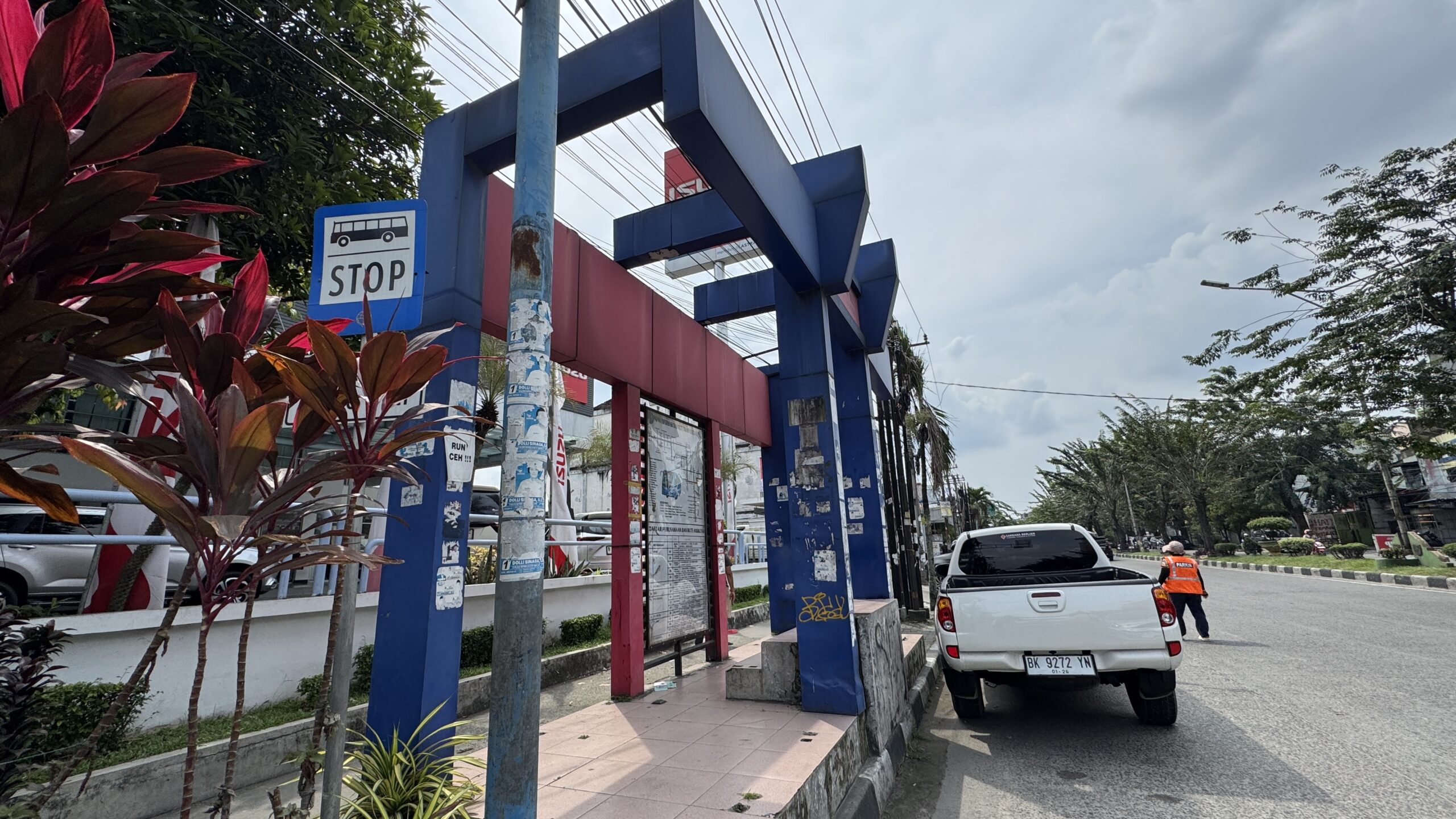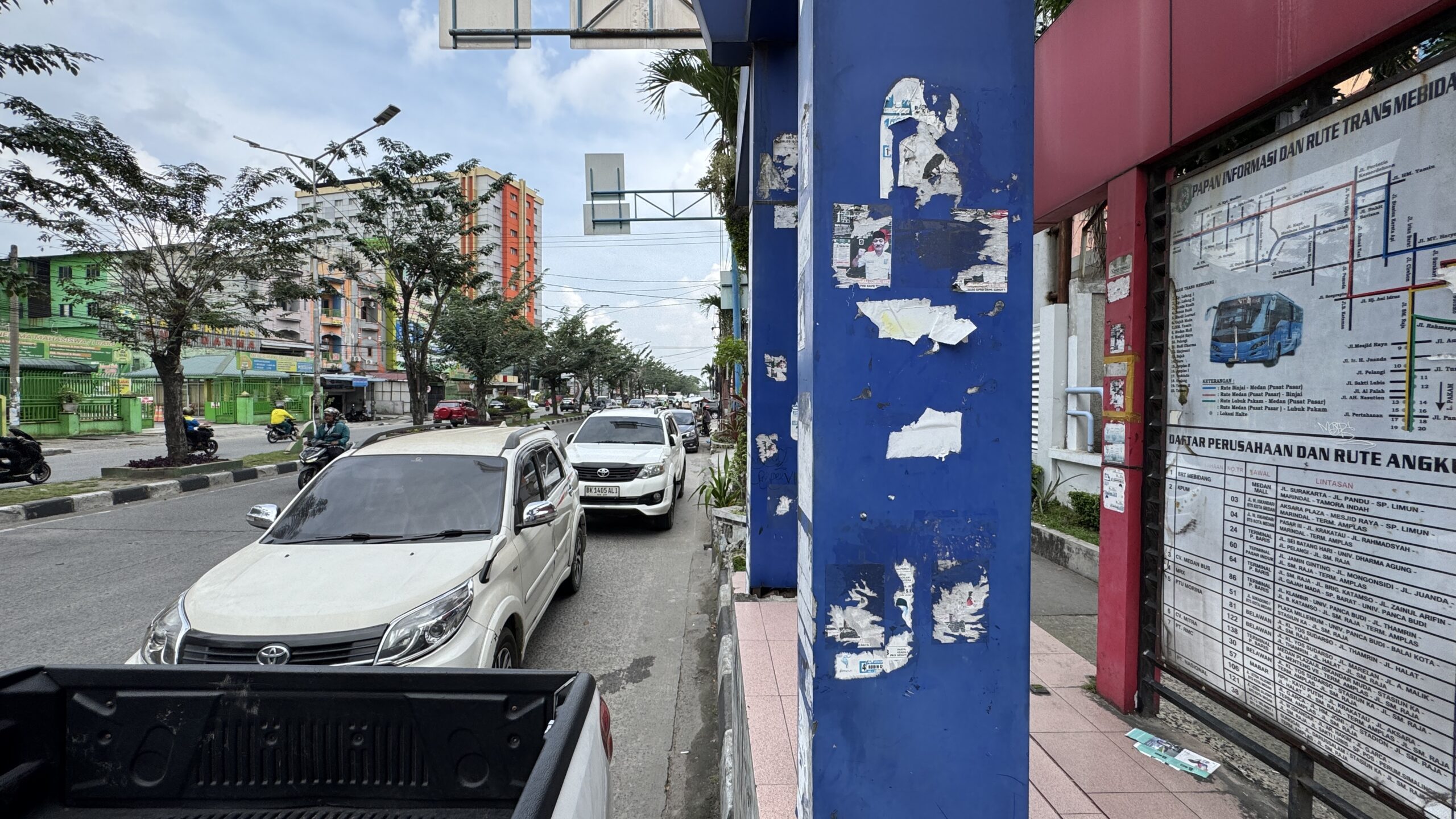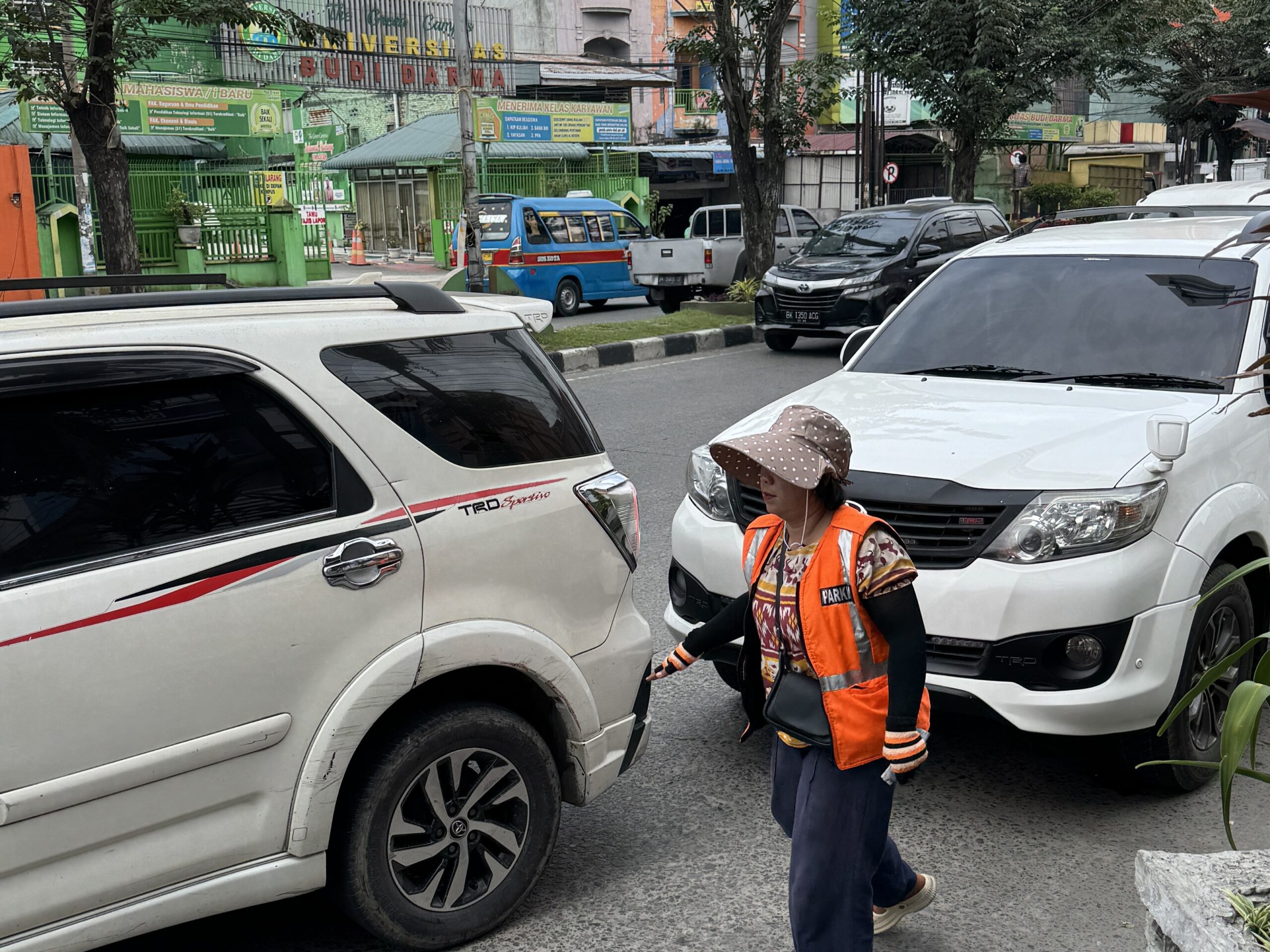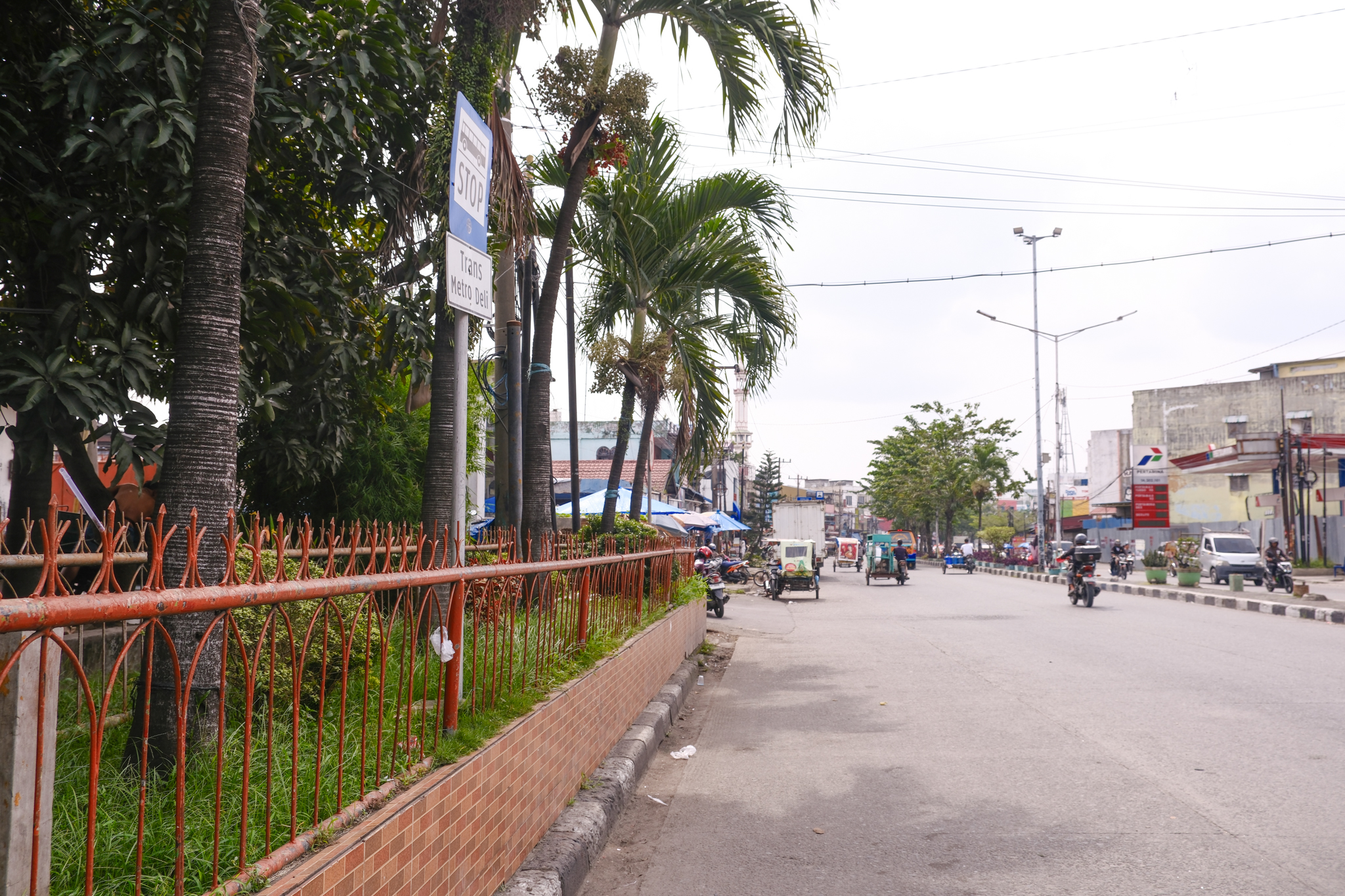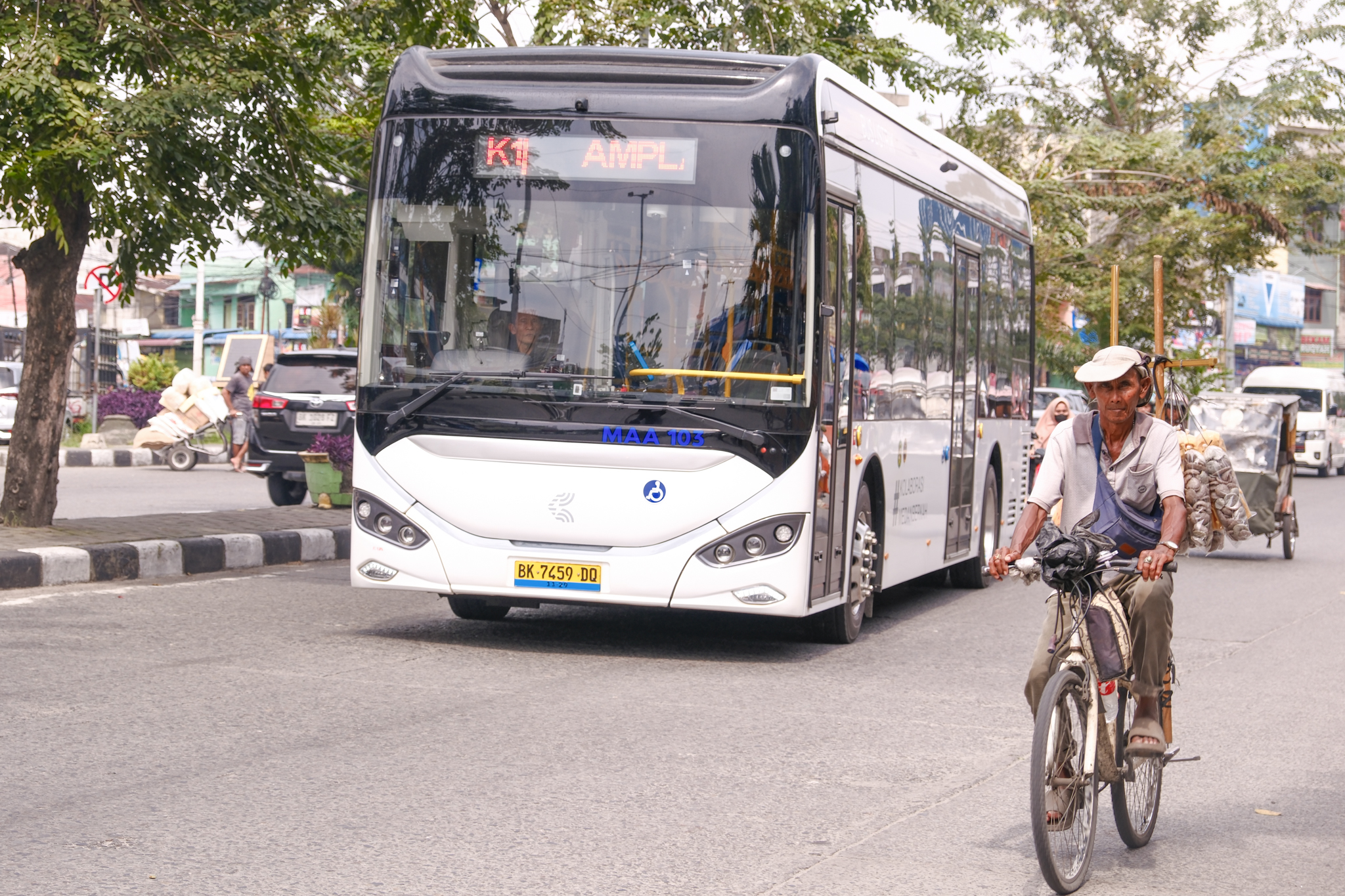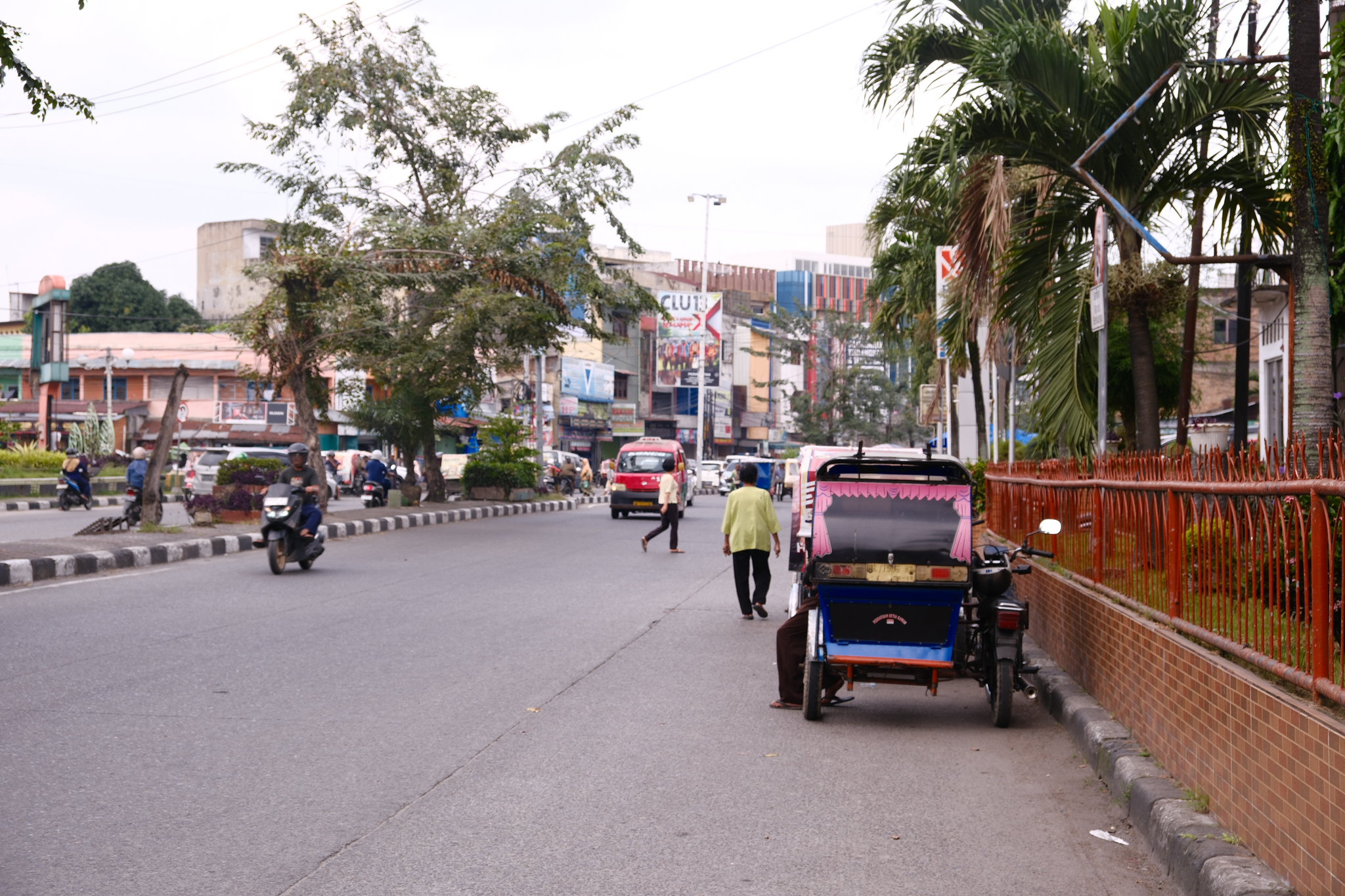May 28, 2025
BRT TransMebidang: A New Chapter in Urban Mobility for Medan
By Kemal Yahya Fardianto, Transport Associate ITDP Indonesia
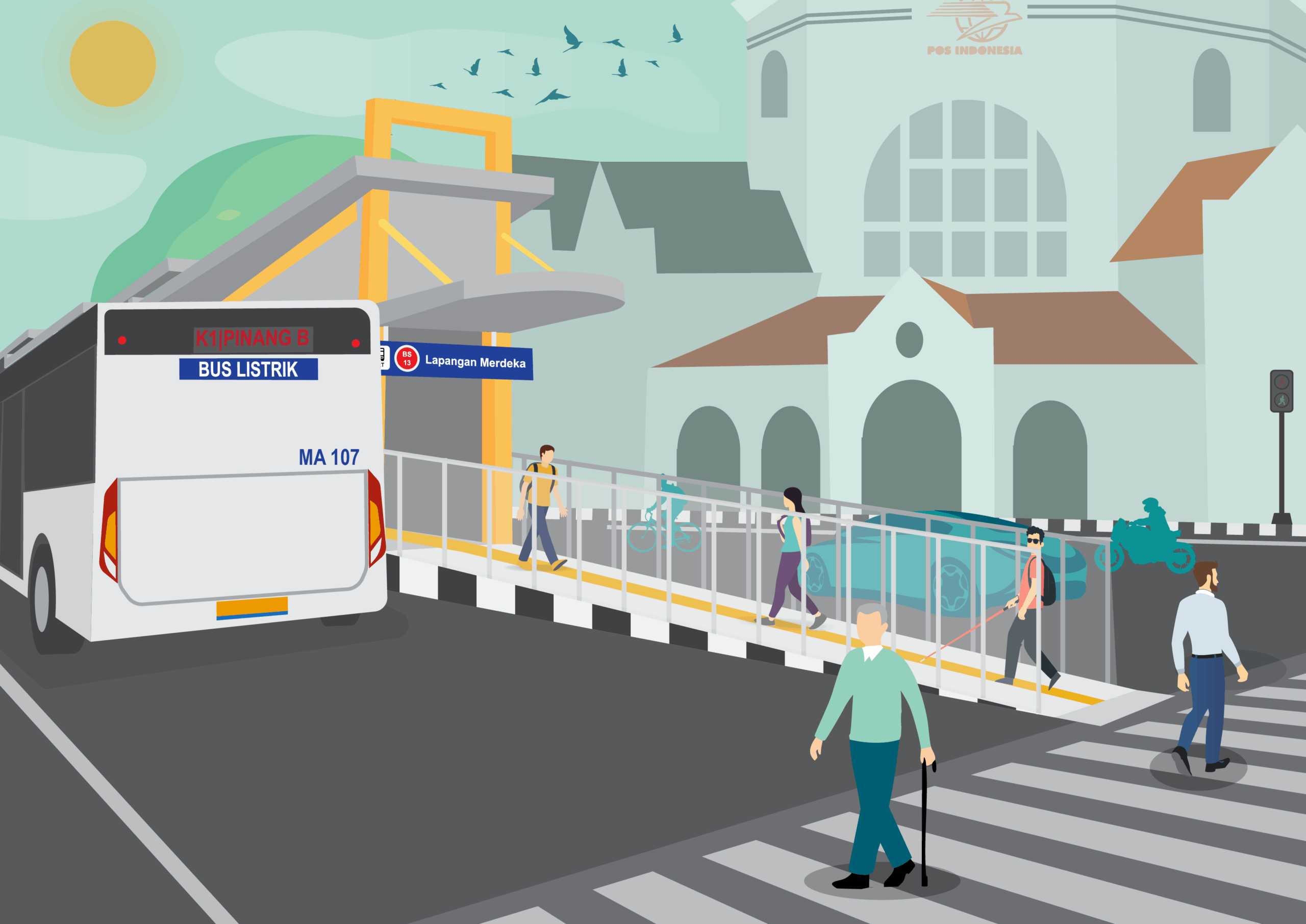
The TransMebidang BRT marks a new chapter in urban mobility for Medan City, bringing hope for a more people-centered and sustainable public transportation system. Its first stop at Lapangan Merdeka is more than just new infrastructure, it stands as a symbol of the city’s vision for creating fair and equitable spaces for all. Yet, many challenges still lie ahead, serving as a reminder that this mobility revolution requires a more holistic and inclusive approach.
The Outcome of Collaboration in Structuring Medan’s Transport System
On the morning of February 19th, sunlight swept across the newly renovated Lapangan Merdeka. Its golden rays glinted off the tidier, more spacious pedestrian pathways. As the day advanced, the streets began to fill—the hum of vehicles intermingled with the bustle of hurried footsteps from commuters starting their day. Yet in one corner of the square, near the Post Office, the scene diverged from the typical morning rush. Officers from the Department of Transportation were diligently finalizing the city’s first TransMebidang BRT station—wiping down glass panels, installing signage, refining road markings, and ensuring all was in order.
Silently, electric buses began pulling into the station situated along the road median—a new sight destined to become part of daily life for the people of Medan. That day was more than a mere trial run for the Lapangan Merdeka transit station; it was a symbol of aspiration. A breath of fresh air for a city yearning for more humane mobility. A modest victory in the long journey toward realizing the TransMebidang BRT system, and a tangible testament to the successful collaboration between the City of Medan and ITDP Indonesia.
Nonetheless, this marks only the beginning. The endeavor to build a truly sustainable transportation system is far from complete.
From Vision to Reality: The Long Journey of the TransMebidang BRT System
The construction and inauguration of the Lapangan Merdeka BRT station represents the culmination of a long-term planning process. Since 2016, ITDP has been formulating the concept of the TransMebidang BRT as a mass transit solution for Medan—integrating corridors, designing safe and accessible stations, and preparing an electronic payment system.
With financial support amounting to US$224 million under the Indonesia Mass Transit (MASTRAN) project—channeled through the Ministry of Transportation for the development of BRT systems in the metropolitan areas of Medan and Bandung—this vision has begun to materialize. Entering the construction phase in 2024, the project encompasses the development of dedicated corridors, stations, depots, IT infrastructure, and bus procurement.
Initial operations are slated to begin in August 2024, with 60 electric buses serving five routes spanning a total of 176.5 kilometers. By 2027, the system is expected to be fully operational, comprising 515 electric buses operating along 17 routes and 32 major stations across Medan, Binjai, and Deli Serdang.
This transformation is not merely about building infrastructure—it represents a concerted effort to establish a mass transit system that is modern, efficient, and sustainable for the city and its surrounding areas.
Between Concept and Reality: Challenges in Implementation
During the inspection of the trial and inauguration of the Lapangan Merdeka station, ITDP Indonesia compared the original design with the constructed result. Overall, the construction closely aligns with ITDP’s proposed design, although certain adjustments were made. From a locational standpoint, ITDP initially recommended placing the station directly in front of the Old City Hall to optimize bus flow through the intersection near the Post Office building (Balai Kota Street–Bukit Barisan Street). However, in execution, the station was shifted slightly south of the intersection to accommodate the renovation of Medan Station and the construction of a flyover. This shift redirected traffic movement originally branching through Bukit Barisan Street toward Prof. H.M. Yamin Street.
From a structural design perspective, the most noticeable difference lies in the station’s width. ITDP proposed a 4-meter-wide platform, consistent with the technical guidelines of the BRT Standard, to ensure adequate passenger capacity and user comfort. The BRT Standard is a comprehensive framework for planning high-quality bus rapid transit systems, developed by ITDP based on its experience in cities such as Bogota, Jakarta, and Guangzhou.
In reality, the constructed station is only 3 meters wide, with an effective width of 2.5 meters in certain sections. While this adjustment generally meets the minimum width requirement of the BRT Standard, ongoing monitoring and evaluation will be essential to ensure the station can accommodate future passenger volumes. According to the Medan City Department of Transportation, future station expansion is feasible on the right-hand side. Currently, boarding and alighting doors are available only on the left side but will eventually be present on both sides in accordance with ITDP’s original design. Despite these modifications, the station remains consistent with the core design principles, maintaining its functionality and accessibility for all users.
In addition to reviewing the Lapangan Merdeka bus stop, ITDP did a survey on every TransMebidang route currently in operation. The survey results show that there are still many bus stops and other BRT support facilities that still have poor accessibility and are not inclusive, especially for vulnerable groups. For example, the accessibility of these stops can be found at Budi Darma 1 and Simpang Limun 1 stops on Corridor 1. First mile last mile connectivity is also still a challenge that must be addressed immediately so that BRT becomes the main choice of Medan citizens in mobility.
A Mobility Revolution for Ongoing Urban Transformation
The initial solution in addressing connectivity barriers to and from bus stops is the construction and development supported by supporting facilities such as bus stops, pedestrian paths, and bicycle lanes that are comfortable, safe, and easily accessible to all. Intermodal integration also needs to be strengthened through efficient feeder services to bridge first- and last-mile connections. On the operational side, consistent bus frequency, time-based ticketing systems, and dedicated lanes are key elements in delivering a reliable transit service. On the urban transportation policy side, the success of this system is also determined by the government’s courage in implementing traffic demand management policies. Restrictions on private vehicles, reduction of parking capacity, and incentives for public transportation users need to be applied for effective shifting.
In service implementation, special attention needs to be given to vulnerable groups, particularly women and children, to ensure that the BRT system is inclusive, accessible, and provides comfort, security, and safety for all users. In Indonesia, the majority of public transport users are women, yet gender-based violence in transport settings remains pervasive and inadequately addressed. With support from the Swiss State Secretariat for Economic Affairs (SECO), the World Bank, ITDP, and UN Women Indonesia are currently conducting a study across six cities, including Medan. This study aims to produce actionable recommendations for the government to reduce gender-related barriers in public transportation operations. It will highlight trends in gender-based violence (GBV) on Indonesian public transport, draw lessons from international best practices, and generate a national guideline for preventing, responding to, managing, monitoring, and evaluating related issues and strategies.
More than just a new mode of transport, the TransMebidang BRT holds significant potential to serve as a catalyst for a broader urban mobility revolution in Medan. However, this potential can only be realized through a comprehensive and consistent implementation of all components—from internationally standardized planning, integrated modes of transport, and progressive traffic management to inclusive and secure service provision for vulnerable populations. With a holistic approach and long-term commitment from all stakeholders, Medan has the opportunity not only to build a reliable and sustainable public transportation system, but also to emerge as a model for cities beyond Jakarta and Java in creating a modern, equitable, and people-centered transport system.
ITDP Indonesia’s recommendation, titled “Design Concept and Implementation Plan for Bus Rapid Transit in the City of Medan”, released in May 2018 with support from the International Climate Initiative (IKI) through the program “Reducing Emissions through Integration and Optimization of Public Transport in Indonesia”, provided the initial framework for developing the BRT system in Medan. This document outlined key elements including corridor selection, technical infrastructure design, and financing schemes.
A follow-up study in November 2023, titled “Accessibility Improvement Report for Bus Rapid Transit (BRT) in Medan”, further deepened this focus by emphasizing pedestrian and cyclist accessibility within the city center. Supported by the Ministry of Transportation and the World Bank, the study complements the BRT development plans with a more inclusive and integrated approach—aligning with Medan’s vision for sustainable urban mobility.

